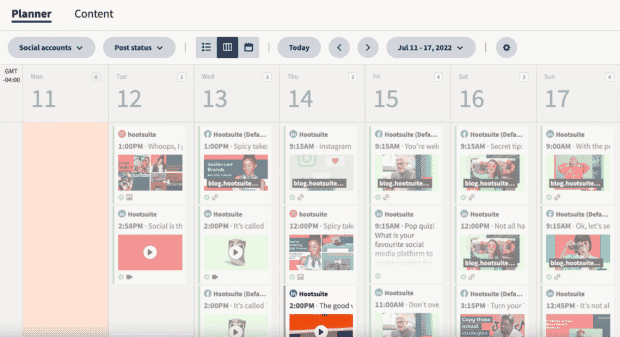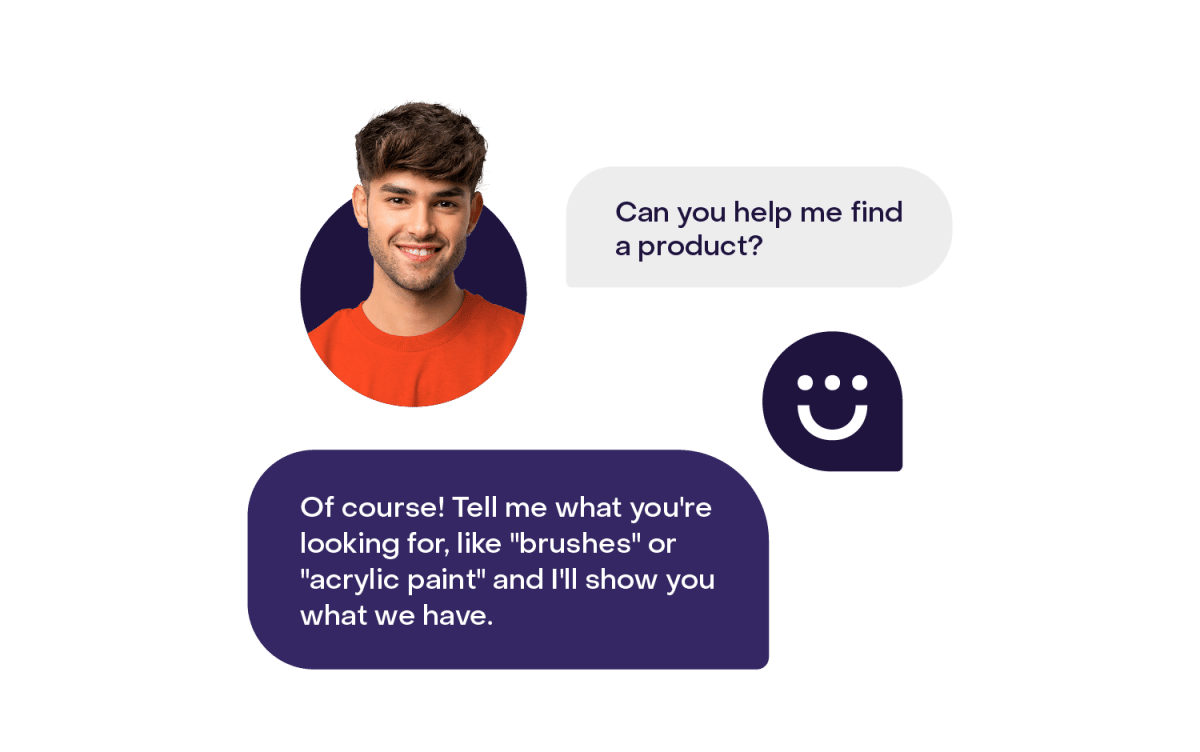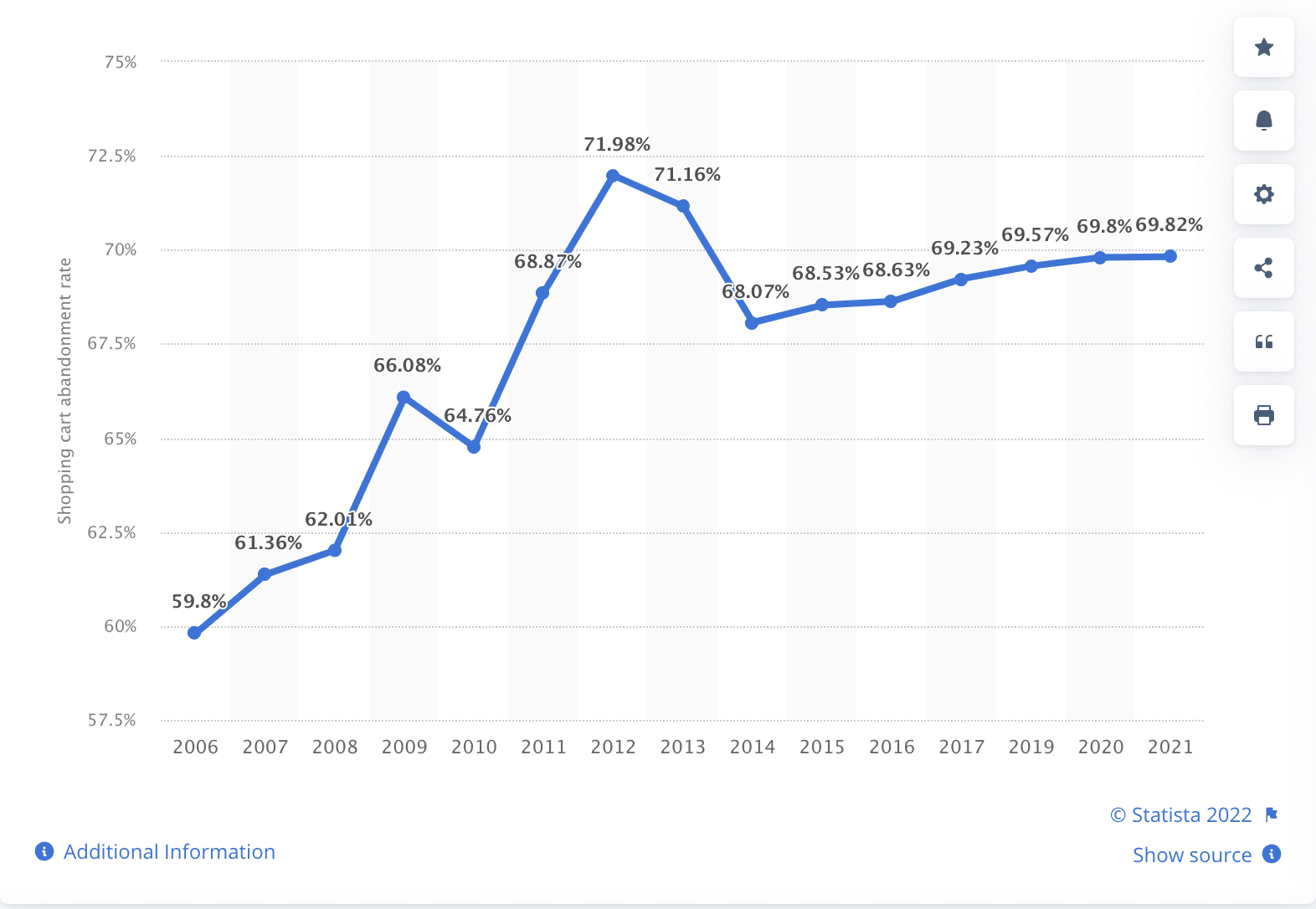If you’re wondering how to increase online sales, have we got something for you.
We are sure you’ve been working hard day and night on your ecommerce strategy. But there are always tactics to optimize and tricks to boost profit.
This article will walk you through 16 tips designed to blast off your revenue. If you follow our advice you’ll be, proverbially speaking, pouring gasoline on your online sales possibilities and lighting a match. Let’s make your bank account explode.
Bonus: Learn how to sell more products on social media with our free Social Commerce 101 guide. Delight your customers and improve conversion rates.
16 ways to increase online sales fast
If you own a business, there’s a good chance that you want to increase your online sales. After all, more sales mean more cash in your pocket! And in this case, mo’ money does not equal mo’ problems. In fact, more money often equals fewer problems, at least in my personal experience.
We’re going to talk through not only how to increase online sales but how to increase online sales fast. You’re going to be able to increase your revenue at the speed of light! So buckle up, and let’s go.
1. Improve your website’s SEO
If you want to increase online sales, improving your website’s SEO is a great place to start. SEO stands for “search engine optimization,” and it refers to the practice of making your website more visible on search engine results pages (SERPs).
In other words, when someone searches for a relevant term on Google, your website is more likely to appear higher up on the list of results. And since people are more likely to click on websites that appear higher up on the list, this can lead to more traffic and, ultimately, more sales.
Improving your SEO can help to build trust and credibility with potential customers. After all, if your website appears high up on the SERPs, it must be because you’re an authority on your topic, right? So if you’re looking for ways to increase online sales, improving your website’s SEO is a great place to start.
You can do this in a few ways:
- Include relevant keywords in your titles and metatags
- Create fresh, original content on a regular basis
- Make sure your content has keywords integrated
- Structure your content according to SEO best practices
- Make sure your website and landing pages are easy to navigate and mobile-friendly
By taking these steps, you’ll give your website a leg up with ranking on SERPs.
2. Show customer testimonials
How many times have you been scrolling through your Facebook feed, seeing an ad for a product that you were interested in but not sure if you should buy it? How did you solve this problem? You probably looked for reviews. And if you couldn’t find any proof that the product was legit, you probably moved on.
Nothing builds trust and confidence like hearing from other people who have had success with a product or service. When potential customers see that others have had positive experiences, they’re much more likely to take the plunge and make a purchase themselves.
This is where customer testimonials come in. Customer testimonials are a great way to increase your online sales. They provide social proof that your product is worth buying.
So, if you’re asking how to increase online sales, the answer is to increase customer trust. Start by collecting customer testimonials and featuring them prominently on your website.
3. Use social media to promote special offers
There’s no denying that social media is a powerful digital marketing tool. With billions of users worldwide, it’s a great way to reach a large audience quickly and easily.
1 in 2 Instagram users, for example, report using the app to find brands. This alone makes a good argument for why you should better understand Instagram ecommerce. When it comes to promoting special offers and increasing online sales, social media can be particularly effective.
By sharing special deals and discounts with your followers, you can encourage them to make purchases from your online store. It’s a great tactic and one that just scratches the surface of social ecommerce.
Use platforms like Facebook and Instagram to run targeted ads. This can help you reach a highly specific audience, one that’s more likely to convert into customers.
You’re not going to want to go at this alone — the scheduling of ad campaigns alone can be a nightmare. You also want to make sure you’re responding to all comments, DMs, and questions. And keeping an eye on your analytics and an ear to the ground for anyone mentioning your brand.
It’s a lot. But don’t worry, using a social media management tool like Hootsuite can help you do all these things in one place. Look at how nice and organized all your scheduled promotional social media posts could look in the Hootsuite dashboard, for example.

4. Install a chatbot to help people find what they’re looking for
Ecommerce chatbots are many successful businesses’ secret sauce. They increase conversion rates by making it easy for site visitors to purchase. When you’re choosing a chatbot, be sure to get one that can:
- Provide your customers with instant gratification through 24/7 availability
- Give personalized recommendations
- Provide human-like conversation
A well-chosen chatbot creates a seamless and convenient shopping experience. One that encourages users to buy. Also, chatbots can help to identify upsell and cross-sell opportunities, as well as capture leads that may have otherwise been lost.

We’re always happy to recommend Heyday; it’s the official Hootsuite-approved chatbot.
Heyday is a conversational ai chatbot that can not only drive sales and conversions but also automate your customer support by answering FAQs around the clock. Having a chatbot saves your team valuable time and money, so they can put their efforts toward larger projects and increasing sales.
5. Make sure your customer experience is top-notch
When you’re looking to increase your online sales, do not overlook the customer experience.
Nowadays, customers are used to a certain level of convenience and service when they shop online. If they don’t have a good experience on your website, they’re likely to take their business elsewhere. And why wouldn’t they? The digital landscape is competitive. If you aren’t offering an easy customer experience, your competitor is.
There are a few key things you can do to make sure your customer experience is top-notch. There are, of course, many more ways to improve your customer experience, but we’ll touch on a few high-level tips here.
First, make sure your website is easy to navigate and user-friendly. Customers should be able to find what they’re looking for without any trouble. And, it should be incredibly easy to check out.
Second, be sure you’re presenting your brand in a polished and professional manner. Customers will take one look at a messy, amateur site and bounce off forever. Your brand is your opportunity to shape the way your customers perceive you. Don’t leave it to chance, be intentional with your branding.
Third, provide good customer service. If a customer has a question or problem, they should be able to reach someone who can help them quickly and easily. Sometimes that someone is a chatbot (see above).
If you really want to make your customer experience work for you, try our free customer experience management template.
6. Offer discounts, promotions, and packages
One great way to boost your online sales is by offering discounts, promos, and packages.
By offering a discount, you can entice customers who may be on the fence about making a purchase. It helps to use the urgency technique here, so be sure to include a countdown with your offer.
Offering a promotional gift or package gives people an incentive to buy more from you. For example, if someone has a bottle of shampoo in their cart, ask if they’re interested in your shower package. Your package might include shampoo, conditioner, and body wash.
By bulking items together, you can offer a discounted price. The higher cost of the order will help to make up for lost profits.
So if you’re looking for ways to boost your online sales, be sure to offer discounts, promotional items, and packages. It could make all the difference in your bottom line.
7. Consider offering a subscription model
Sometimes, online shoppers don’t want to go through the hassle of reordering a product they know they’ll want or need again. Others simply forget to order until they’ve already run out, which can be frustrating.
This is where a subscription model starts to look pretty good.
This type of pricing can be extremely beneficial for businesses that sell products or services that are used on a regular basis. Not only does it provide a steady stream of revenue, but it also helps to build customer loyalty. It takes a lot more effort to cancel a subscription model than to simply not reorder an item. People will be more likely to stay with you rather than go to the competition, even if they offer a lower price.
Incentivize your subscription models. Do so by offering subscribers a lower rate than one-off purchasers or a promotional gift.
8. Make returns easy
Any online business owner knows that returns are a necessary evil. But did you know that making returns easy could actually help to increase your online sales?
That’s right. By making it easy for customers to return items, you can create a sense of trust and confidence that will encourage them to buy from you again in the future.
Start by offering free shipping on all returns. This will remove one of the biggest barriers to returning an item. Then, make sure that your return policy is easy to find and understand.
Finally, process returns quickly and efficiently to minimize any inconvenience for your customers. By following these simple steps, you can turn returns into a positive force for your business and boost your online sales in the process.
9. Offer fewer choices
People get stuck trying to decide what they want when faced with too many options. When they’re unsure, they might take some time away to think about the purchase or to compare prices. This is bad for business because it can lead to lost sales.
The best solution? Structure information so visitors only see a few different products on offer at any one time. This keeps them from getting overwhelmed when exploring all of the brands in depth. With a few options in front of them, they have a clear path forward to getting what they want.
10. Target look-alike audiences
Who is guaranteed to want your products? People just like your existing customers. These people are your look-alike audience.
Look-alike audiences are groups of people who share similar characteristics to your existing customers. By targeting these audiences, you’ll be more likely to reach people who are interested in what you’re selling.
There are a few different ways to create look-alike audiences. You can use data from your website, social media, or even offline sources. Facebook makes it easy with a look-alike option when you create ads.
The important thing is to make sure that you have a large enough dataset to work with. Once you have your data, you can use algorithms to identify common patterns among your customers. From there, you can create ad campaigns that target these patterns.
Then, all you have to do is run your ads targeting your look-alike audience and watch the sales roll in.
11. Deal with your abandoned carts
Abandoned carts account for 70% of all online shopping carts, and that number keeps rising; check out the chart below.

Source: Statista
Picture these lost opportunities like a cart full of money abandoned in your store’s parking lot. You wouldn’t just leave it out there, would you? No? Great. We’ll show you how to run out and wheel that cart back to your cash register.
First, take a look at your checkout process and make sure it’s as streamlined as possible. Customers should be able to complete their purchases in just a few clicks. If your checkout process is complicated or takes too long, that’s likely one of the reasons why customers are abandoning their carts.
Another way to deal with abandoned carts is to offer incentives for completing a purchase. For example, you could offer free shipping or a promotional gift chosen at checkout.
Or, create an email flow dedicated to abandoned carts, with a call to action to ‘buy now’. Shoot off a reminder email within a couple of hours, then if they still haven’t purchased, send them a discount code to encourage conversions.
12. Create buyer personas and user journey maps
If you’re looking to increase your online sales, one of the best things a small business can do is understand its audience. To do that, you can create buyer personas and user journey maps.
By understanding your target audience and how they interact with your website, you can make sure you’ve optimized your sales funnel for conversions. Additionally, you can use this information to create marketing campaigns tailored to your audience’s needs and interests.
13. Capitalize on holidays
Holidays are a great time to promote online sales.
Black Friday and Cyber Monday, for example, are some of the biggest shopping days of the year, and it’s a perfect time to offer discounts and promotions on your website. But, you’ll need to stand out from your competition with a solid Black Friday ecommerce marketing strategy.
If you have a brick-and-mortar store, you can also use Black Friday as an opportunity to drive traffic to your website. By offering special deals and promotions, you can encourage customers to shop with you online.
14. Use good quality product photography
Use high-quality photos of your products online! With smartphone cameras being what they are, there is no excuse to have blurry, poorly edited images from an old mobile device on your site. Plus, TikTok is full of easy product photography hacks.
Good product photos will show potential customers what your product looks like in real life and can give them a better idea of whether or not it’s something they’re interested in.
Poor-quality photos, on the other hand, can make your product look cheap and unappealing and may dissuade potential customers from even considering it.
15. Connect your store to your social media accounts
Did you know you can integrate your Shopify store with your social media accounts? And the best part, it’s actually not that hard to do.
Integrating your ecommerce store with your social accounts gives your customers more places to find you. That means more opportunities to convert. Plus, it affords consumers the chance to buy your products while they’re in that easy, dreamy browsing-on-social-media state.
After all, 52% of online brand discovery happens in public social feeds. So, let them discover you, then purchase from you all at the same time.
16. Set up a killer email marketing campaign
Email marketing is a surefire way to increase online sales. Send targeted emails to your existing customer base. You can encourage them to make repeat purchases and drive new traffic to your website.
And the best part is that setting up an email marketing campaign is easy and affordable. There are a ton of tools out there that will guide you through setting up your first campaign.
Save time managing your social media presence with Hootsuite. Publish and schedule content, find relevant conversions, engage your audience, measure results, and more — all from one simple dashboard. Try it free today.






